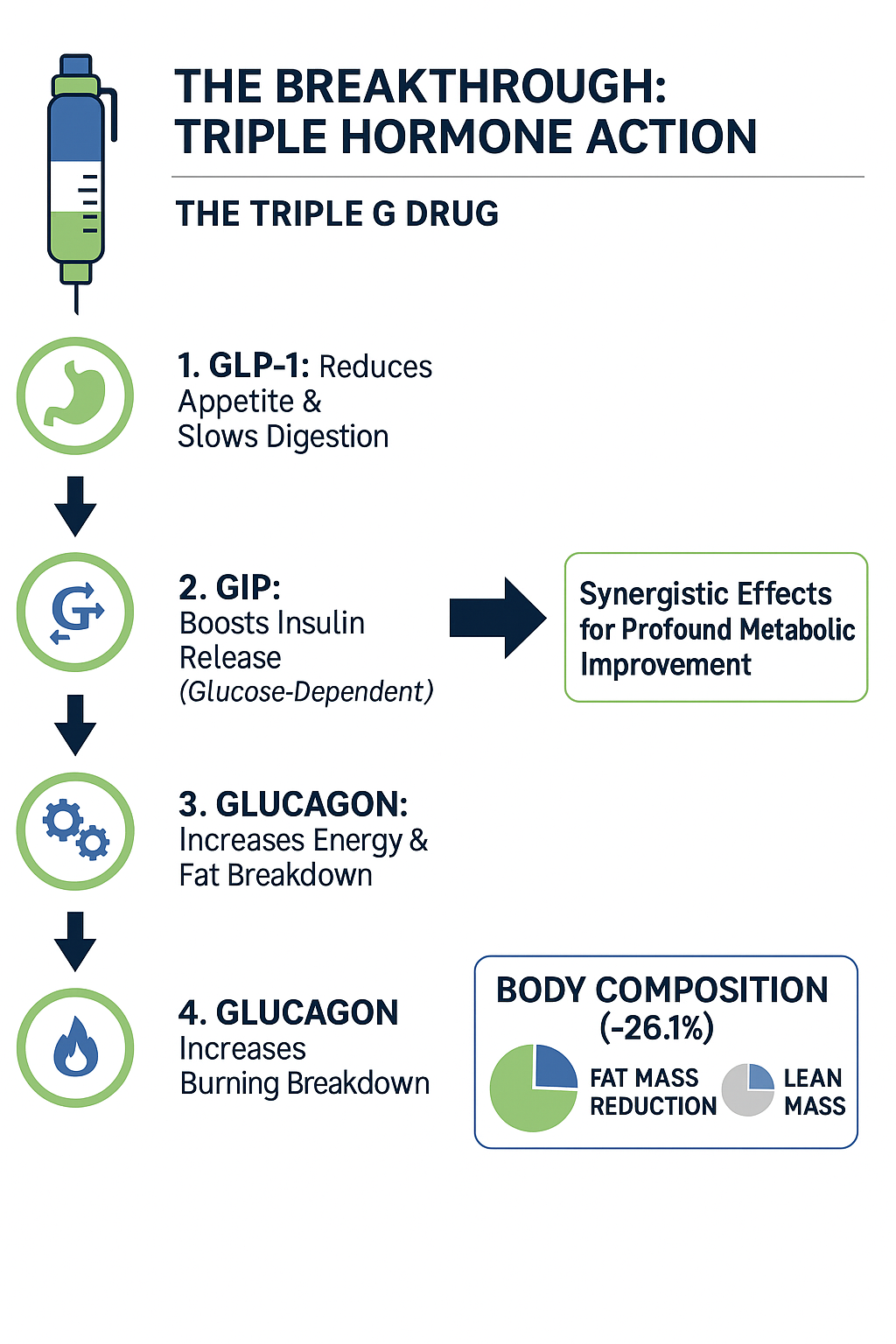
High-Intensity Interval Training (HIIT) has rapidly gained traction across the UK as one of the most efficient workout methods for weight loss and overall fitness. For women navigating the demands of modern life be it careers, family commitments, or personal pursuits, finding time-efficient and effective ways to maintain health is paramount. HIIT emerges as a solution that not only fits into tight schedules but also delivers impressive results.
According to the NHS, approximately 29% of women in England are classified as obese, and an additional 31% are overweight. These statistics underscore a pressing need for accessible, effective weight loss strategies tailored to women's unique physiological and lifestyle needs. This guide delves into how HIIT can be a transformative tool for women aiming to shed pounds, boost their health, and enhance their quality of life.
What is HIIT?
HIIT stands for High-Intensity Interval Training, a workout methodology characterised by short bursts of intense exercise alternated with periods of rest or low-intensity movement. This training style is designed to maximise calorie burn and improve cardiovascular fitness more efficiently than traditional steady-state exercises.
Core Principles of HIIT
- Intensity: Engaging in exercises at 80-95% of your maximum heart rate. This level of effort pushes your body out of its comfort zone, leading to significant physiological adaptations.
- Intervals: Structured periods of high-intensity activity (typically 20 seconds to 2 minutes) followed by rest or active recovery periods of equal or longer duration.
- Duration: HIIT workouts are concise, generally lasting between 15 to 30 minutes, making them ideal for busy schedules.
Variations of HIIT
Understanding different HIIT variations allows you to select a style that aligns with your preferences and fitness level.
- Tabata Training: Originating from Japan, this protocol involves 20 seconds of maximum effort followed by 10 seconds of rest, repeated eight times for a total of four minutes. It's highly effective for improving aerobic and anaerobic capacity.
- EMOM (Every Minute on the Minute): Perform a specific number of repetitions at the start of every minute. The quicker you complete them, the more rest you have before the next minute begins. This format builds endurance and pacing.
- Circuit Training: Rotate through a series of exercises targeting different muscle groups with minimal rest in between. This keeps your heart rate elevated and muscles engaged throughout the session.
- Fartlek Training: A Swedish term meaning "speed play," this involves varying your speed and intensity at random intervals during activities like running or cycling.
Each variation offers unique benefits. For instance, Tabata is excellent for those looking to improve speed and power, while circuit training is beneficial for full-body conditioning.
How Can HIIT Help with Weight Loss?
HIIT's effectiveness in weight loss is supported by a growing body of scientific research. It combines cardiovascular and strength training elements, leading to comprehensive fitness improvements.
The Science Behind HIIT's Effectiveness
Increased Calorie Burn
HIIT workouts can burn significantly more calories in a shorter time compared to traditional exercise forms. A research study found that HIIT burns 25-30% more calories than other forms of exercise like weight training, cycling, and running on a treadmill.
EPOC Effect (Excess Post-exercise Oxygen Consumption)
One of HIIT's most significant advantages is the EPOC effect, commonly known as the "afterburn." After intense exercise, your body consumes more oxygen to restore itself to its resting state, burning additional calories in the process. This elevated metabolic rate can last for up to 24 hours post-workout, enhancing overall calorie expenditure.
Muscle Building and Metabolism Boost
HIIT stimulates muscle protein synthesis due to the resistance and anaerobic components involved. Building lean muscle mass is crucial because muscle tissue burns more calories at rest than fat tissue. The American Council on Exercise explains that increased muscle mass leads to a higher resting metabolic rate, aiding long-term weight management.
Cardiovascular and Health Benefits
Heart Health Improvement
HIIT has been shown to enhance cardiovascular function by increasing VO2 max—the maximum rate of oxygen consumption measured during incremental exercise. The British Heart Foundation notes that regular HIIT sessions can reduce blood pressure and lower the risk of heart disease.
Blood Sugar Regulation
For women at risk of type 2 diabetes or those with insulin resistance, HIIT can improve insulin sensitivity. A study in Diabetes Care found that HIIT significantly reduced blood glucose levels in participants with type 2 diabetes (Little et al., 2011).
HIIT for Women: Addressing Specific Concerns
While HIIT offers numerous benefits, it's essential to address specific concerns women may have to ensure the training is both safe and effective.
Common Concerns
Intensity Levels
Many women worry that HIIT may be too demanding, especially if they are new to exercise or returning after a hiatus. The high-intensity nature can seem intimidating, but HIIT is adaptable to all fitness levels.
Safety and Risk of Injury
The rapid movements and high-impact exercises in HIIT can increase the risk of injuries if not performed correctly. Concerns about joint health, particularly knees and ankles, are common.
Hormonal Fluctuations
Women's hormonal cycles can affect energy levels, endurance, and strength. Understanding how to adjust workouts during different menstrual phases is crucial.
Modifications for Safety and Comfort
Customising HIIT workouts can mitigate risks and enhance enjoyment.
Beginner-Friendly Adjustments
- Lower Impact Options: Replace high-impact moves like jump squats with bodyweight squats.
- Reduced Intensity: Start with a 1:2 work-to-rest ratio (e.g., 20 seconds of work, 40 seconds of rest).
- Simplified Exercises: Opt for exercises that are easier to perform with correct form.
Exercise Modification Table

Impact of Menstrual Cycle
The NHS suggests that moderate exercise during menstruation can alleviate cramps and boost mood. However, during the luteal phase (post-ovulation), energy levels may dip. Adjusting HIIT intensity during these times can help maintain consistency without overexertion.
HIIT and PCOS
Polycystic Ovary Syndrome (PCOS) affects approximately 1 in 10 women in the UK, leading to symptoms like weight gain and insulin resistance. According to Verity, a UK-based PCOS charity, incorporating HIIT into exercise routines can improve insulin sensitivity and support weight management. A study in the Journal of Clinical Endocrinology & Metabolism found that HIIT significantly reduced insulin resistance in women with PCOS (Harrison et al., 2012).
Creating a HIIT Workout Routine
Designing a personalised HIIT routine ensures that the workout is effective, enjoyable, and sustainable.
Steps to Build Your Routine
- Assess Your Fitness Level
- Beginner: New to exercise or returning after a long break.
- Intermediate: Regularly active but new to HIIT.
- Advanced: Experienced with high-intensity workouts.
- Set Realistic Goals
- Short-Term: Aim to complete three HIIT sessions per week.
- Long-Term: Target a specific weight loss goal or fitness milestone.
- Select Appropriate Exercises
- Cardio Moves: Jumping jacks, burpees, sprints.
- Strength Moves: Squats, lunges, push-ups.
- Core Exercises: Planks, Russian twists, bicycle crunches.
- Determine Intervals and Duration
- Beginners: Start with 20 seconds of work and 40 seconds of rest.
- Intermediate: Aim for 30 seconds of work and 30 seconds of rest.
- Advanced: Push to 40 seconds of work and 20 seconds of rest.
- Plan Frequency
- Recommendation: 2-3 HIIT sessions per week, allowing for rest days to promote recovery.
Sample Workouts
Beginner Level
Warm-Up (5 minutes):
- Light jogging or marching in place
- Arm circles
- Leg swings
Circuit:
- Bodyweight Squats: 20 seconds work, 40 seconds rest
- Modified Push-Ups: 20 seconds work, 40 seconds rest
- Step Jacks: 20 seconds work, 40 seconds rest
- Static Lunges: 20 seconds work (each leg), 40 seconds rest
Repeat Circuit: 2-3 times
Cool-Down (5 minutes):
- Gentle stretching of major muscle groups
- Deep breathing exercises
Intermediate Level
Warm-Up (5 minutes):
- Dynamic stretches
- Light jogging
- High knees (moderate pace)
Circuit:
- Burpees: 30 seconds work, 30 seconds rest
- Mountain Climbers: 30 seconds work, 30 seconds rest
- Jump Squats: 30 seconds work, 30 seconds rest
- Plank Holds: 30 seconds work, 30 seconds rest
Repeat Circuit: 3-4 times
Cool-Down (5 minutes):
- Yoga poses like Child's Pose and Downward Dog
- Foam rolling tight areas
Advanced Level
Warm-Up (10 minutes):
- Skipping rope
- Dynamic stretches
- Sprint intervals (short distances)
Circuit:
- Plyometric Push-Ups: 40 seconds work, 20 seconds rest
- Tuck Jumps: 40 seconds work, 20 seconds rest
- Kettlebell Swings: 40 seconds work, 20 seconds rest
- Bicycle Crunches: 40 seconds work, 20 seconds rest
Repeat Circuit: 4-5 times
Cool-Down (10 minutes):
- Extended stretching session
- Meditation or mindfulness practice
Equipment and Resources
- Bodyweight Exercises: Ideal for home workouts; no equipment required.
- Home Equipment:
- Jump Rope: Enhances cardio component.
- Dumbbells/Kettlebells: Adds resistance for strength gains.
- Resistance Bands: Useful for activating different muscle groups.
- HIIT Apps:
- Freeletics: Offers customised bodyweight HIIT workouts.
- Nike Training Club: Provides a variety of workouts with video guidance.
- Seven: Quick, seven-minute HIIT sessions for those short on time.
Staying Motivated with HIIT
Maintaining motivation is essential for achieving and sustaining weight loss results.
Tips for Motivation
Track Progress
- Fitness Journals: Record workouts, feelings, and achievements.
- Apps and Wearables: Use technology to monitor heart rate, calories burned, and steps taken.
Find a Workout Buddy
- Social Accountability: Exercising with a friend or group can enhance commitment.
- Community Support: Join local fitness classes or online forums for encouragement.
Set Achievable Goals
- SMART Goals: Specific, Measurable, Achievable, Relevant, Time-bound.
- Celebrate Milestones: Reward yourself for reaching short-term goals (e.g., new workout gear).
Incorporate Variety
- Mix Up Workouts: Rotate different HIIT styles or incorporate new exercises.
- Music and Playlists: Create energising playlists to keep workouts enjoyable.
Mental Well-being Benefits
Exercise is not just about physical health; it significantly impacts mental well-being.
- Endorphin Release: HIIT triggers the release of endorphins, reducing stress and enhancing mood.
- Stress Management: Regular physical activity is linked to lower levels of stress hormones like cortisol.
- Confidence Boost: Achieving fitness goals improves self-esteem and body image.
The Mental Health Foundation emphasises the importance of physical activity in managing mental health conditions such as anxiety and depression.
Safety Considerations and When to Consult a Doctor
Prioritising safety ensures that your fitness journey is sustainable and free from setbacks.
When to Seek Medical Advice
- Pre-existing Medical Conditions:
- Cardiovascular Issues: Heart disease, hypertension.
- Musculoskeletal Problems: Chronic back pain, arthritis.
- Pregnancy and Postpartum:
- Pregnancy: Consult your GP or midwife before starting or continuing HIIT.
- Postpartum Recovery: Get clearance, especially if you've had a C-section.
- Age Considerations: Women over 50 should have a health check-up to assess suitability.
Potential Risks
- Injuries:
- Strains and Sprains: From improper form or overuse.
- Stress Fractures: Due to repetitive high-impact movements.
- Overexertion:
- Burnout: Physical and mental exhaustion from pushing too hard.
- Rhabdomyolysis: A rare but serious condition caused by muscle breakdown.
Safe Exercise Practices
- Warm-Up and Cool-Down: Never skip these to prepare your body for intense activity and aid recovery.
- Hydration: Drink water before, during, and after workouts.
- Nutrition: Fuel your body with balanced meals to support energy needs.
Refer to guidelines from reputable organisations:
- NHS Physical Activity Guidelines: Recommendations on exercise types and durations.
- MHRA: Safety notices and advice on health products.
- NICE Guidelines: Best practices for physical activity interventions.
Conclusion
HIIT stands out as a versatile, efficient, and effective approach to weight loss and overall health improvement for women. By combining intense activity with strategic rest periods, HIIT maximises calorie burn, boosts cardiovascular health, and promotes lean muscle development—all within a time frame that suits busy lifestyles.
Remember, the key to success with HIIT—or any fitness programme—is consistency, personalisation, and listening to your body. Tailor your workouts to your fitness level, adjust intensity as needed, and don't hesitate to seek professional guidance when necessary.
Embrace the journey towards a healthier, more vibrant you. Consider joining fitness communities, both in-person and online, to share experiences, gain support, and stay motivated. Your commitment today paves the way for a healthier tomorrow.
References
- McRae, G., Payne, A., Zelt, J. G. E., Scribbans, T. D., Jung, M. E., Little, J. P., & Gurd, B. J. (2012). Extremely short duration high-intensity interval training improves aerobic capacity and insulin sensitivity in young healthy males. Journal of Strength and Conditioning Research, 26(4), 1087–1095. Retrieved from https://journals.lww.com/nsca-jscr/fulltext/2012/07000/comparison_of_energy_expenditure_during_hiit_and.4.aspx
- American Council on Exercise. (2019). How HIIT Works and Why You Need It in Your Workout Plan. Retrieved from https://www.acefitness.org/education-and-resources/lifestyle/blog/6593/how-hiit-works-and-why-you-need-it-in-your-workout-plan/
- British Heart Foundation. (2020). Staying Active. Retrieved from https://www.bhf.org.uk/informationsupport/support/healthy-living/staying-active
- Verity. (2020). Polycystic Ovary Syndrome (PCOS). Retrieved from https://www.verity-pcos.org.uk/
- Mental Health Foundation. (2019). Physical Health and Mental Health. Retrieved from https://www.mentalhealth.org.uk/a-to-z/p/physical-health-and-mental-health
- NHS. (2020). Exercise. Retrieved from https://www.nhs.uk/live-well/exercise/
- Medicines and Healthcare products Regulatory Agency (MHRA). (2021). Safety Guidelines. Retrieved from https://www.gov.uk/government/organisations/medicines-and-healthcare-products-regulatory-agency
- National Institute for Health and Care Excellence (NICE). (2015). Physical Activity Guidelines. Retrieved from https://www.nice.org.uk/guidance/ng13
- Twain, M. (n.d.). Mark Twain Quotes. Retrieved from https://www.brainyquote.com/quotes/mark_twain_151185
Take charge of how you look and feel.
Backed by science. Guided by experts.
SheMed’s medical weight loss programme combines expert care and science-backed treatment to help you feel and look your best — for life.
SheMed’s medical weight loss programme combines expert care and science-backed treatment to help you feel and look your best — for life.
The content on the SheMed blog is provided for general informational and educational purposes only. While SheMed provides professional weight loss services and strives to ensure the information shared is accurate and up to date, we make no representations or guarantees as to its accuracy, completeness, or timeliness. This content should not be taken as personal medical advice or a substitute for consultation with a qualified healthcare provider. Always speak with your doctor or licensed medical professional about your individual health or medical needs before starting any new treatment or programme. Never disregard or delay seeking professional medical advice because of something you have read on this site. SheMed is not responsible for any actions you may take based on the information provided in this blog.
Subscribe to our Newsletter
Thank you! Your submission has been received!
Oops! Something went wrong while submitting the form.





